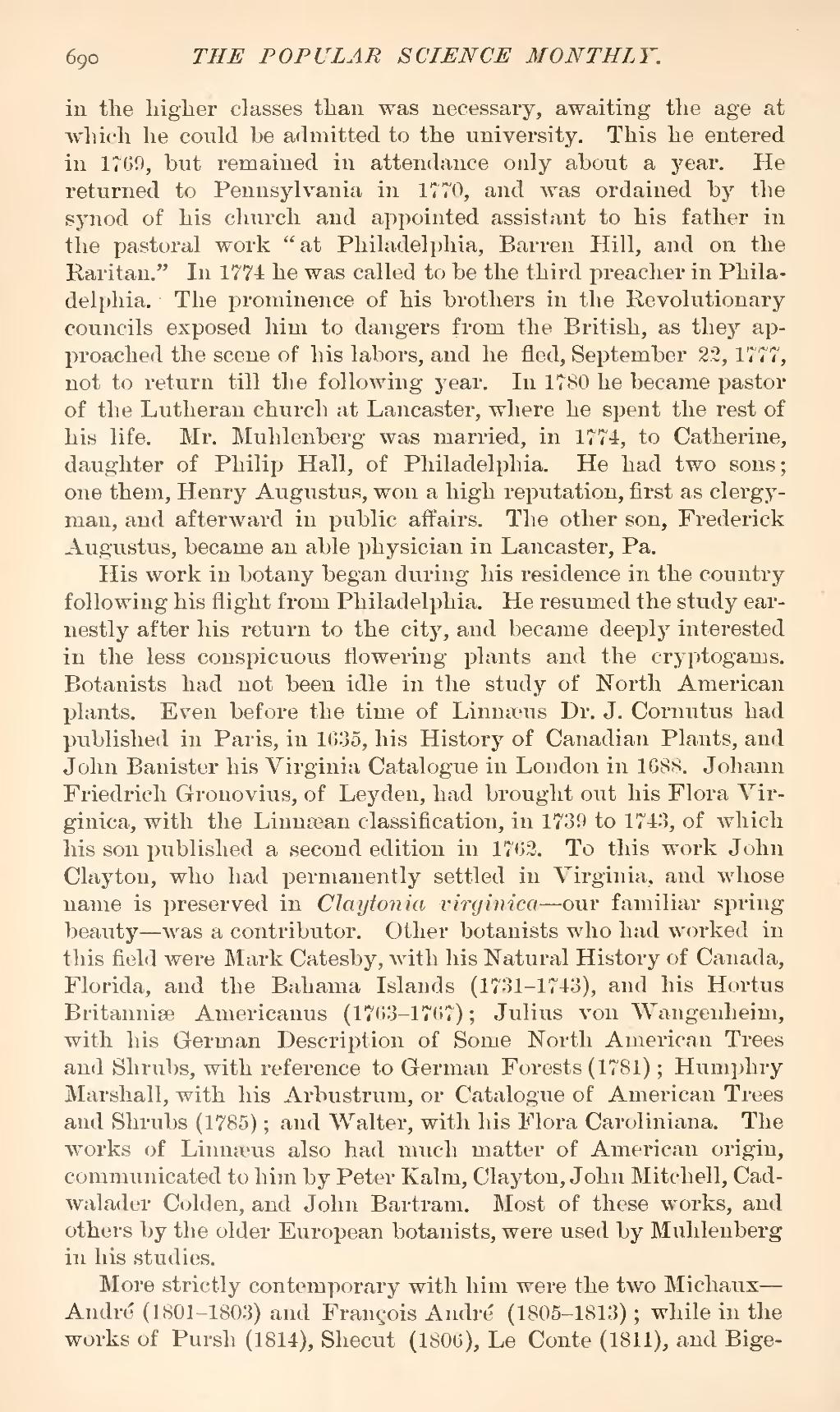in the higher classes than was necessary, awaiting the age at which he could be admitted to the university. This he entered in 1769, but remained in attendance only about a year. He returned to Pennsylvania in 1770, and was ordained by the synod of his church and appointed assistant to his father in the pastoral work "at Philadelphia, Barren Hill, and on the Raritan." In 1774 he was called to be the third preacher in Philadelphia. The prominence of his brothers in the Revolutionary councils exposed him to dangers from the British, as they approached the scene of his labors, and he fled, September 22, 1777, not to return till the following year. In 1780 he became pastor of the Lutheran church at Lancaster, where he spent the rest of his life. Mr. Muhlenberg was married, in 1774, to Catherine, daughter of Philip Hall, of Philadelphia. He had two sons; one them, Henry Augustus, won a high reputation, first as clergyman, and afterward in public affairs. The other son, Frederick Augustus, became an able physician in Lancaster, Pa.
His work in botany began during his residence in the country following his flight from Philadelphia. He resumed the study earnestly after his return to the city, and became deeply interested in the less conspicuous flowering plants and the cryptogams. Botanists had not been idle in the study of North American plants. Even before the time of Linnæus Dr. J. Cornutus had published in Paris, in 1635, his History of Canadian Plants, and John Banister his Virginia Catalogue in London in 1688. Johann Friedrich Gronovius, of Leyden, had brought out his Flora Virginica, with the Linnæan classification, in 1739 to 1743, of which his son published a second edition in 1762. To this work John Clayton, who had permanently settled in Virginia, and whose name is preserved in Claytonia virginica—our familiar spring beauty—was a contributor. Other botanists who had worked in this field were Mark Catesby, with his Natural History of Canada, Florida, and the Bahama Islands (1731-1743), and his Hortus Britanniæ Americanus (1763-1767); Julius von Wangenheim, with his German Description of Some North American Trees and Shrubs, with reference to German Forests (1781); Humphry Marshall, with his Arbustrum, or Catalogue of American Trees and Shrubs (1785); and Walter, with his Flora Caroliniana. The works of Linnæus also had much matter of American origin, communicated to him by Peter Kalm, Clayton, John Mitchell, Cadwalader Colden, and John Bartram. Most of these works, and others by the older European botanists, were used by Muhlenberg in his studies.
More strictly contemporary with him were the two Michaux—André (1801-1803) and François André (1805-1813); while in the works of Pursh (1814), Shecut (1806), Le Conte (1811), and Bige-

